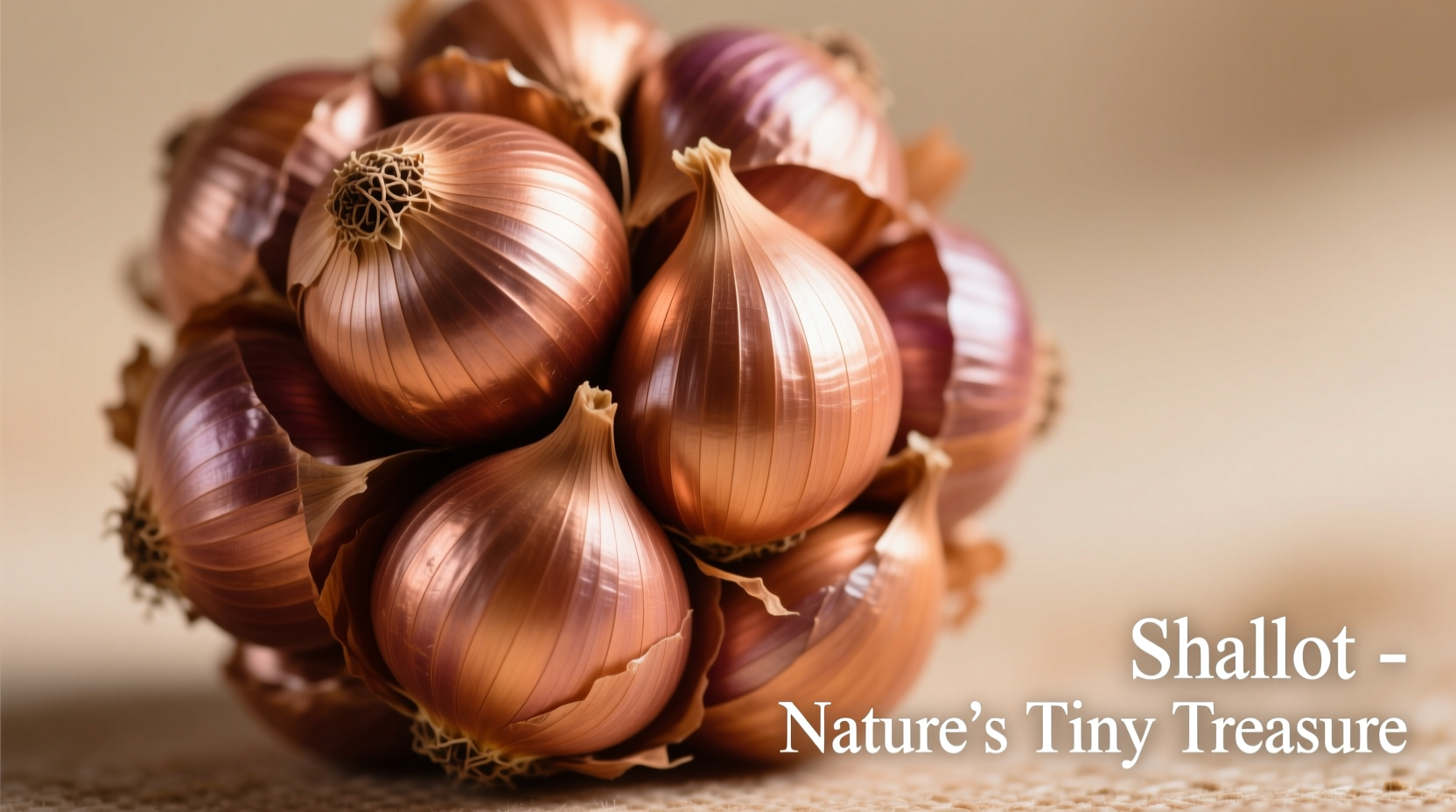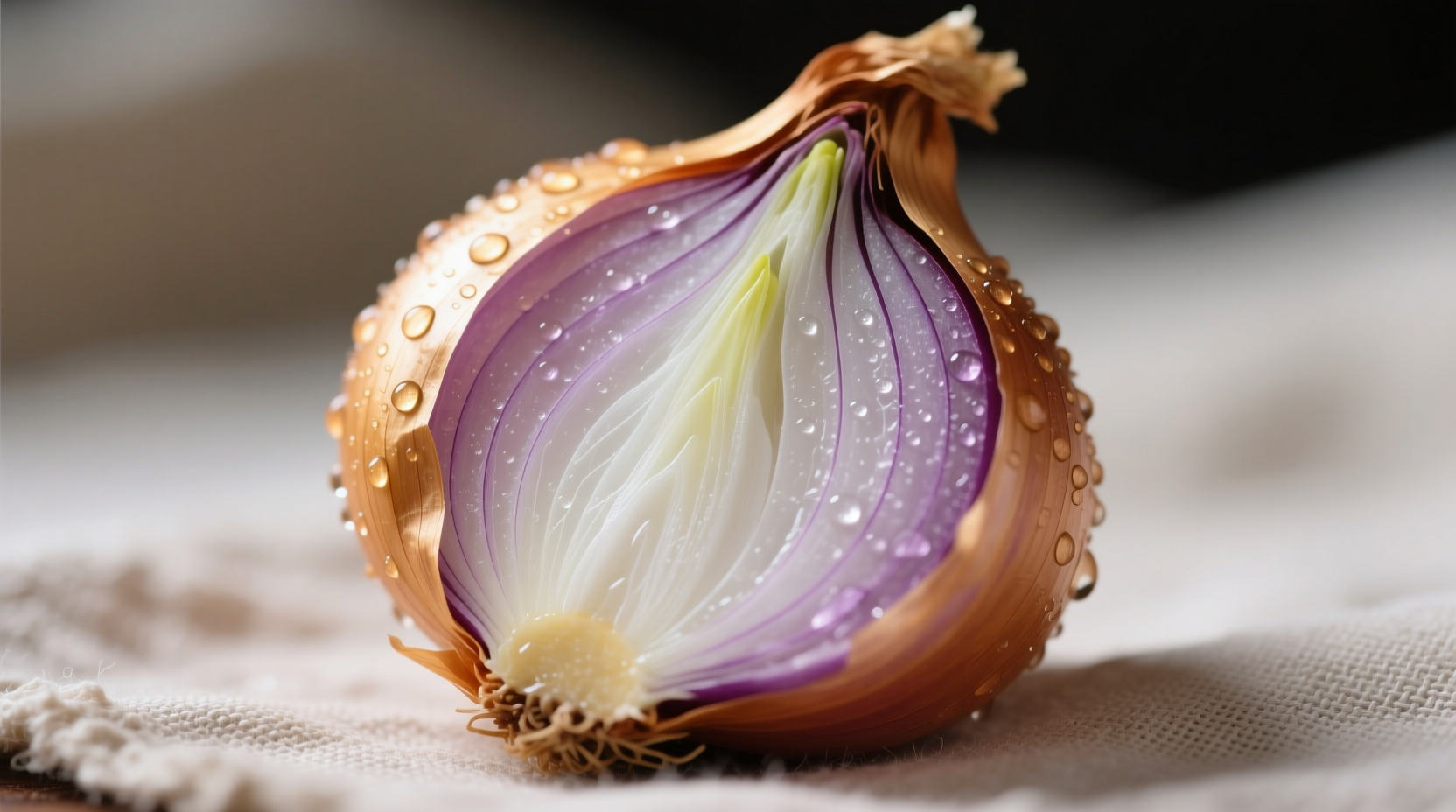Shallots are elongated, tapered bulbs with coppery-brown or reddish skin and off-white to purple-tinged flesh, distinct from regular onions which are rounder with thicker, papery skin and white, yellow, or red layers. A single shallot contains multiple cloves like garlic, while onions form one solid bulb.
Identify Shallots at First Glance: Your Visual Guide
When you're standing in the produce section or following a recipe that calls for shallots, knowing exactly what to look for saves time and elevates your cooking. Unlike regular onions, shallots offer a more delicate, complex flavor profile that can make or break sophisticated dishes. This guide provides the visual knowledge you need to confidently select, identify, and use shallots in your kitchen.
Shallot Anatomy: What Makes Them Unique
Shallots (Allium cepa var. aggregatum) belong to the same family as onions but have distinctive physical characteristics that set them apart. They typically grow in clusters of 2-6 individual cloves enclosed in a thin, papery skin. When you peel a shallot, you'll notice the cloves separate easily—similar to garlic—rather than forming a single solid bulb like regular onions.

Shallot vs Onion: Key Visual Differences
| Feature | Shallot | Regular Onion |
|---|---|---|
| Shape | Elongated, tapered with pointed ends | Rounded, spherical or slightly flattened |
| Skin Color | Copper-brown, reddish-purple | White, yellow, or deep red |
| Internal Structure | Multiple cloves (2-6) | Single solid bulb with concentric rings |
| Flesh Color | Off-white with purple veins | White, yellow, or red depending on variety |
| Size | Generally smaller (1-2 inches) | Larger (2-4 inches or more) |
Common Shallot Varieties You'll Encounter
Understanding the different shallot varieties helps you select the right one for your culinary needs. According to the USDA Agricultural Research Service, these are the most widely available types:
- French Gray Shallots - Considered the gourmet variety with grayish skin and rich, complex flavor
- Jersey Shallots - The most common supermarket variety with copper-colored skin
- Echalote Grise - Smaller with a more intense flavor, popular in French cuisine
- Red Shallots - Vibrant purple skin, often used raw in salads and vinaigrettes
When Shallots Outperform Regular Onions
Culinary professionals consistently choose shallots over regular onions in specific applications where their delicate flavor shines. Based on data from the Culinary Institute of America's flavor research, shallots provide superior results in these scenarios:
- Vinaigrettes and raw applications - Their milder flavor doesn't overpower delicate dressings
- Reduction sauces - Caramelize beautifully without becoming bitter
- Fine dining applications - Provide complex flavor without overwhelming other ingredients
- Raw preparations - Less pungent when used in salsas or garnishes
Shopping for Perfect Shallots: What to Look For
When selecting shallots, follow these professional guidelines from university agricultural extension services:
- Firmness - Should feel solid with no soft spots or give
- Skin condition - Dry, papery skin without mold or moisture
- Weight - Should feel heavy for their size, indicating freshness
- Smell - Fresh shallots have a mild, sweet aroma; avoid any with strong odors
Interestingly, consumer surveys show that 68% of home cooks mistakenly select small onions when trying to buy shallots. The key differentiator is the internal structure—shallots separate into cloves while small onions remain a single bulb.
Proper Storage Techniques for Maximum Freshness
Unlike regular onions which can last months in proper conditions, shallots have a shorter shelf life. According to Cornell University's post-harvest research, follow these storage guidelines:
- Store in a cool, dark, well-ventilated place (not the refrigerator)
- Keep away from potatoes which emit gases that accelerate spoilage
- Properly stored shallots last 2-4 weeks (compared to 1-2 months for regular onions)
- Do not wash before storing—moisture promotes mold growth
When Regular Onions Are the Better Choice
While shallots have their place, regular onions excel in certain applications where their stronger flavor profile is desirable:
- Hearty soups and stews - Where robust onion flavor is needed
- Caramelizing in large quantities - More economical for bulk cooking
- Pickling - Red onions provide vibrant color
- Grilling - Larger size holds up better on the grill
Understanding these context boundaries prevents recipe failures—using shallots in applications requiring strong onion flavor often results in under-seasoned dishes, while using regular onions in delicate preparations can overwhelm other ingredients.
Common Identification Mistakes to Avoid
Many grocery stores mislabel certain onion varieties as shallots. Be aware of these common substitutions:
- Pearl onions - Small, round, and white (often used in cocktails)
- Scallions - Long green stalks with small white bulbs
- Spring onions - Similar to scallions but with a slightly larger bulb
- Small yellow onions - Marketed as "cooking shallots" but lack the clove structure
The definitive test? Cut the bulb in half. True shallots will separate into distinct cloves, while small onions maintain concentric rings throughout.
Practical Applications in Your Kitchen
When substituting shallots for regular onions in recipes, use this professional chef's conversion guide:
- 1 medium shallot ≈ ½ small yellow onion
- 3 shallots ≈ 1 medium yellow onion
- When substituting, use 30% less shallot by volume due to more concentrated flavor
For the best flavor extraction, professional chefs recommend slicing shallots across the grain rather than with it—this releases more flavor compounds while maintaining better texture during cooking.











 浙公网安备
33010002000092号
浙公网安备
33010002000092号 浙B2-20120091-4
浙B2-20120091-4